Limited to 25 pieces, the Urwerk UR-100 Iron speaks to the brand's whimsical, futurist design philosophy. Reminiscent of a satellite or a spaceship, integrating an atypical wandering hours display, it embodies the contrarian design principles which birthed the brand.
Creating Urwerk
In 1995, Felix Baumgartner, a promising young watchmaker, and Martin Frei, an industrial designer, first met in order to discuss the idea of creating a new way to perceive time. From their meeting, Urwerk was born, a combination of the words Ur – the city where time was first measured over 6,000 years ago using sun-lit obelisks and Werk – which means "to create" in German.
Felix Baumgartner first learnt about watchmaking in his father’s atelier, who restored historically significant clocks, including the Campani brothers’ night clock from 1656, believed to feature the first ever wandering hours complication. He would later attend the prestigious watchmaking school in Solothurn and create complicated watches for independent Sven Andersen. The other half of Urwerk, Martin Frei has a background in graphic and industrial design, complementing Felix’s watchmaking abilities.
Following their meeting, the pair established Urwerk in 1997. In the same year, they launched the UR-101 and UR-102 watches at Baselworld, the first steps in their mission to push forward innovative ways of displaying time. With their atypical time display, use of modern materials and futurist design, the first Urwerk watches certainly surprised the rather conservative watch world. As Felix Baumgartner himself recalls, "we were not businessmen. It was extremely risky because we had no idea how our watches would be accepted.”
The wandering hours complication
It is believed that the wandering hours complication was first used on a night clock designed for Pope Alexander XII in 1656 by the Campani brothers, a well-known family of clockmakers in Rome. The insomniac pope requested the ability to read time in the dark, so an oil lamp was placed inside the clock case, illuminating the dial and allowing him to read the time through the open-worked numerals. The concept was briefly translated to pocket watches but was supplanted by the two-hand method of displaying time. It is either an improbable coincidence or an early source of inspiration that Baumgartner’s father was once involved in its restoration, at a time when his son would have been around the workshop.
This UR-100 Iron features offers a contemporary take on the wandering hours complication, with a skeletonised view of the mechanics and a futuristic design inspired by science fiction and space exploration. It displays time thanks to three satellite discs, which rotate on a centre wheel, where the hour and minute hands are usually attached. The hours on the disks point to the minutes on a 120-degree sector, gliding over them over the course of an hour. The rotating ring turns 360 degrees, one full turn, in 3 hours.
A futuristic design
Aesthetically, the UR-100 Iron embodies Urwerk's approach to watchmaking, with a futuristic design which has become synonymous with the brand. The case is made out of stainless steel and features a mix of carefully brushed and finely polished surfaces.
Limited to 25 pieces, the UR-100 Iron is the first example in the series, later followed by the , also made from stainless steel but sandblasted to a matt, dark grey finish. This UR-100 Iron represents the earliest configuration of the UR-100 design. Overall, the case measures 41mm by 49.7mm, with the time being set through a crown at 12 o'clock.
Vibrant red accents bring touches of colour to the time display, which is remarkably legible, despite the exposed mechanics. The UR-100 Iron also integrates astronomical distance indicators. The scale at 10 o’clock shows the distance travelled by the Earth rotating on its own axis (555 km every 20 minutes), whilst the scale at 2 o'clock displays the distance travelled by the Earth around the sun (35,740 km every 20 minutes). This detail was inspired by a pendulum clock made by 19th century French clockmaker, Gustave Sandoz.
The Movement
This UR-100 Iron is powered by the automatic UR 12.01, which has a frequency of 28,800vph and a power reserve was 48 hours. The rotor is equipped with a perforated disk, which regulates the movement of the rotor, preventing it from spinning excessively. The movement is based on a Zenith ébauche, which is combined with Urwerk's own time display module.
The Set
This Urwerk UR-100 Iron comes with its outer box, inner box, leather document holder, manuals, International Warranty card and original sales receipts and paperwork. It also comes on a new black fabric strap by Urwerk and is accompanied by its original black alligator Urwerk strap, alongside its Urwerk tang buckle.
If sold within the United Kingdom, this Urwerk UR-100 Iron will be subject to 20% VAT. Viewings are currently suspended for the time being.
Closer look
| Brand: | Urwerk |
| Model: | UR-100 Iron |
| Movement: | automatic |
| Functions: |
hours, minutes, distance travelled on Earth’s equator in 20 minutes, distance Earth travels around the sun in 20 minutes |
| Features: | wandering hours, 1 of 25 |
| Case: |
41mm x 49.7mm |
| Crystal: | sapphire |
| Bracelet: | black fabric Urwerk strap |
| Year: | 2019 (sold) |
| Box & papers: |
outer box, inner box, leather document holder, manuals, International Warranty card |

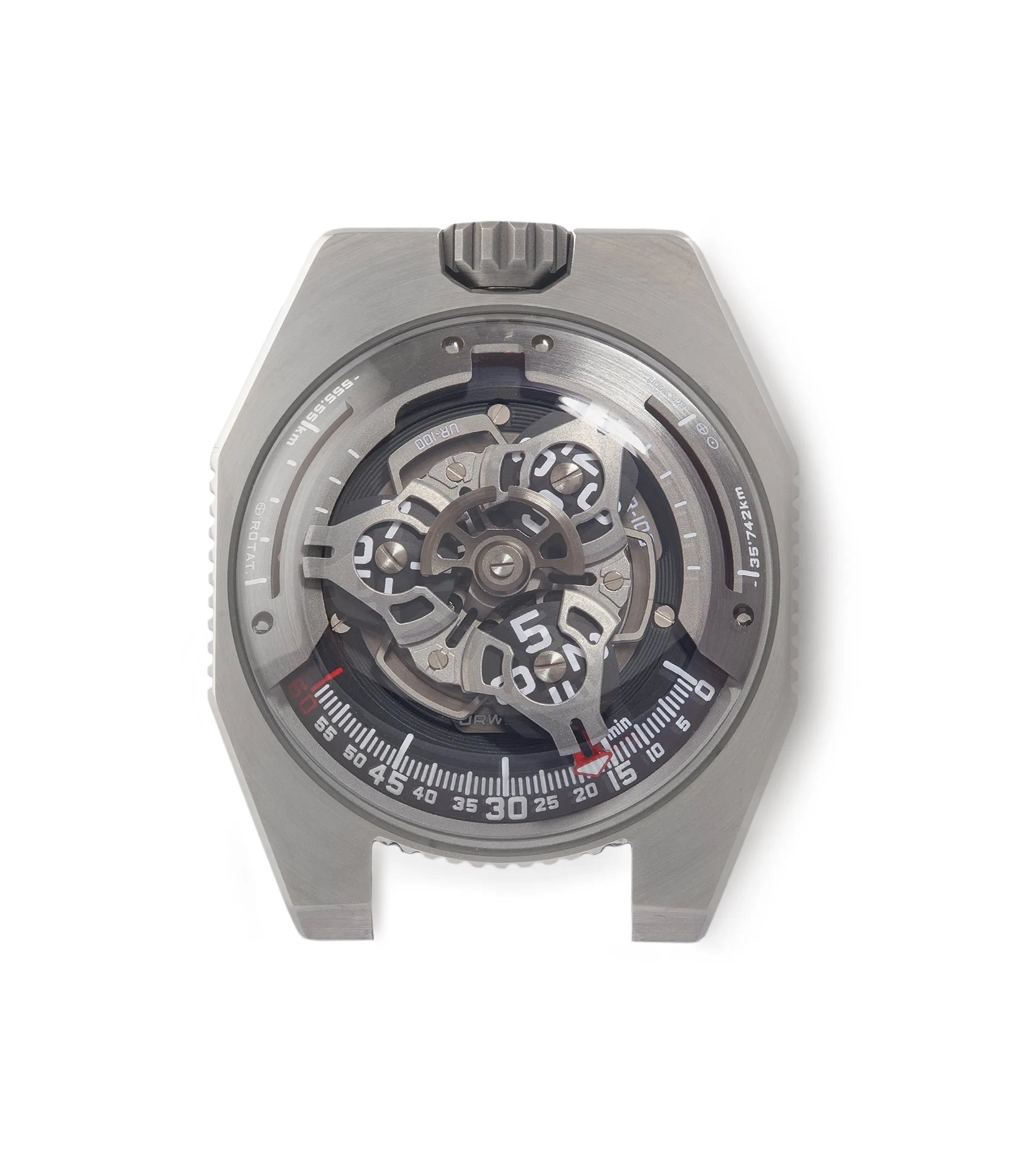
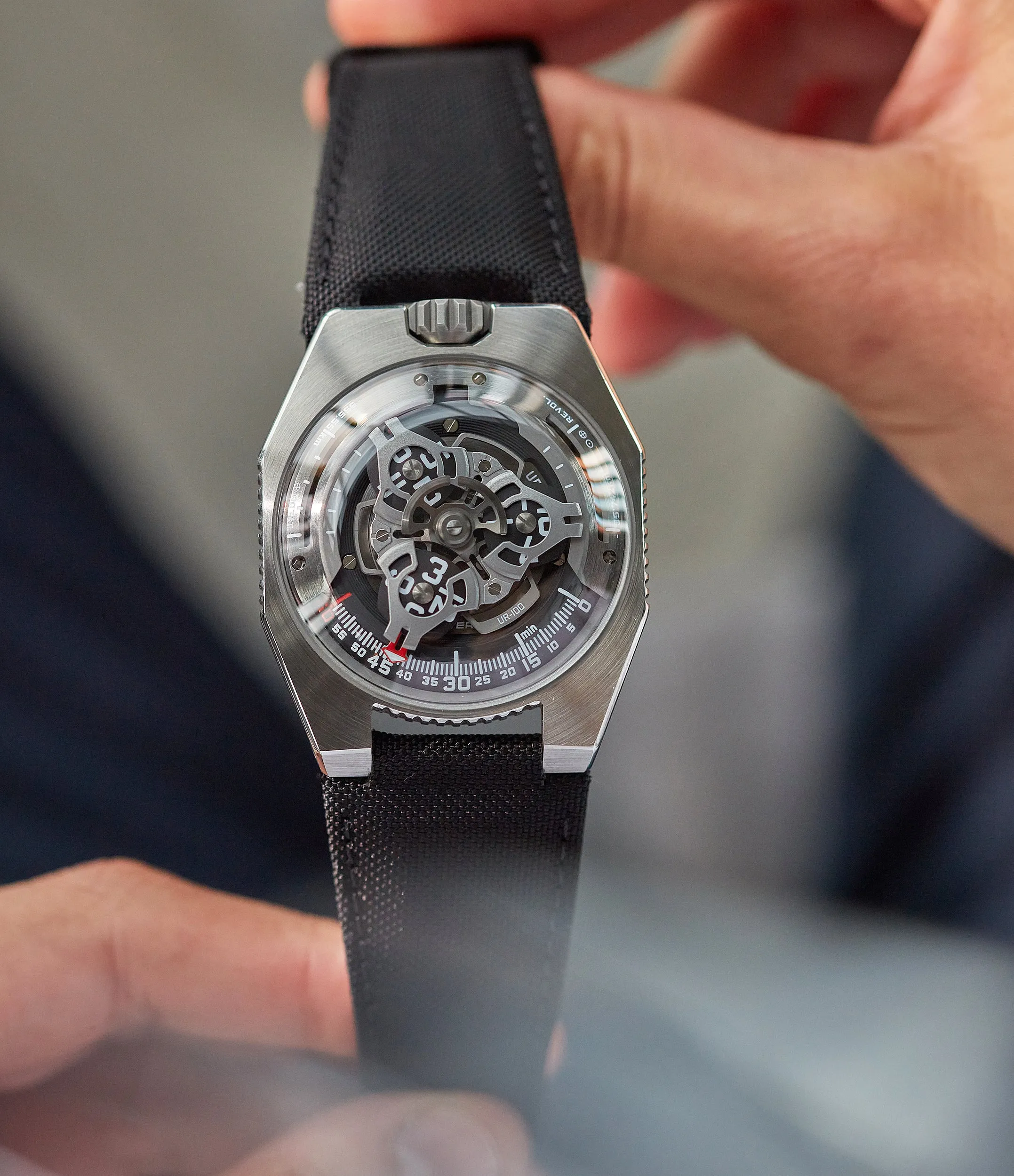
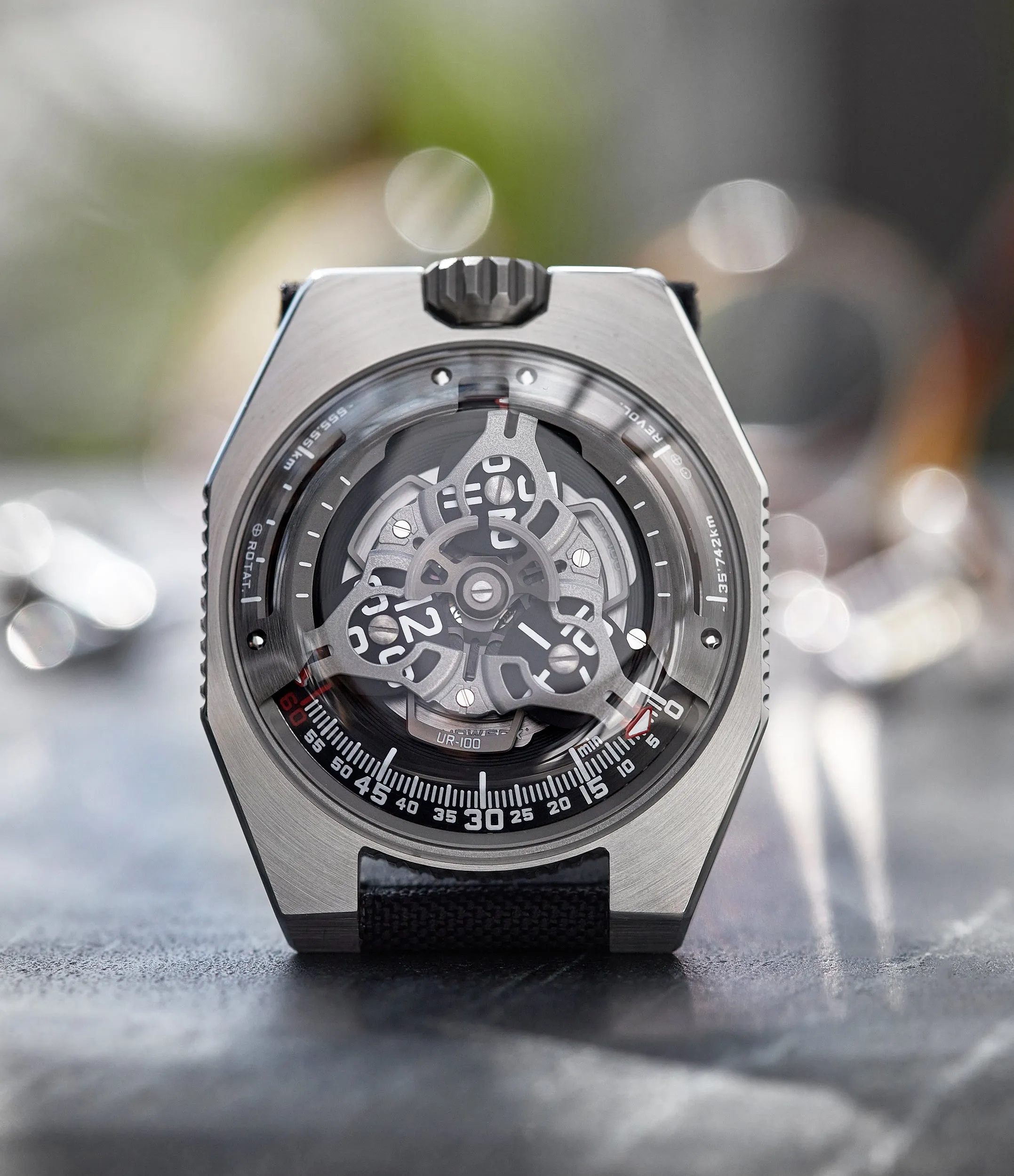
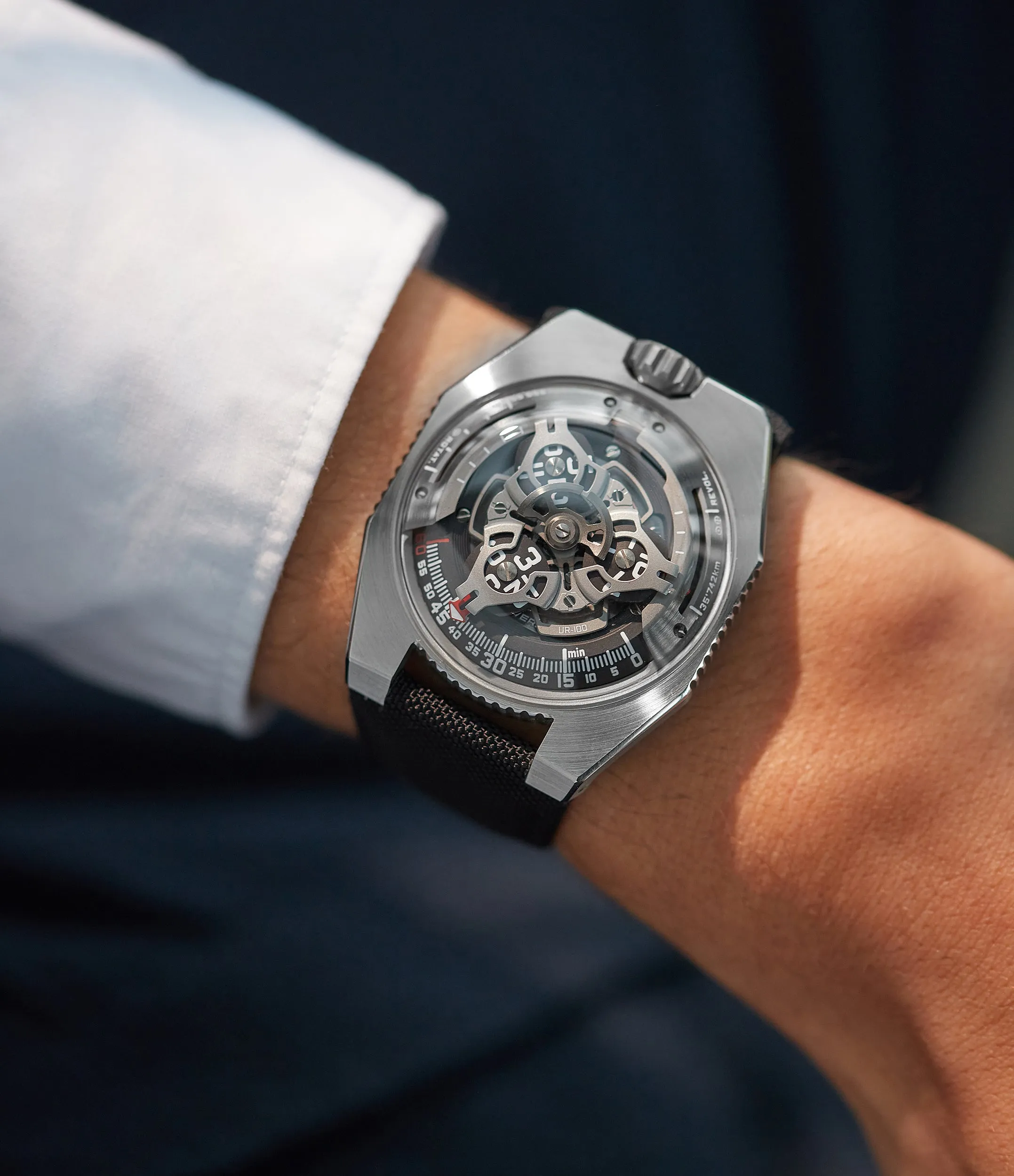
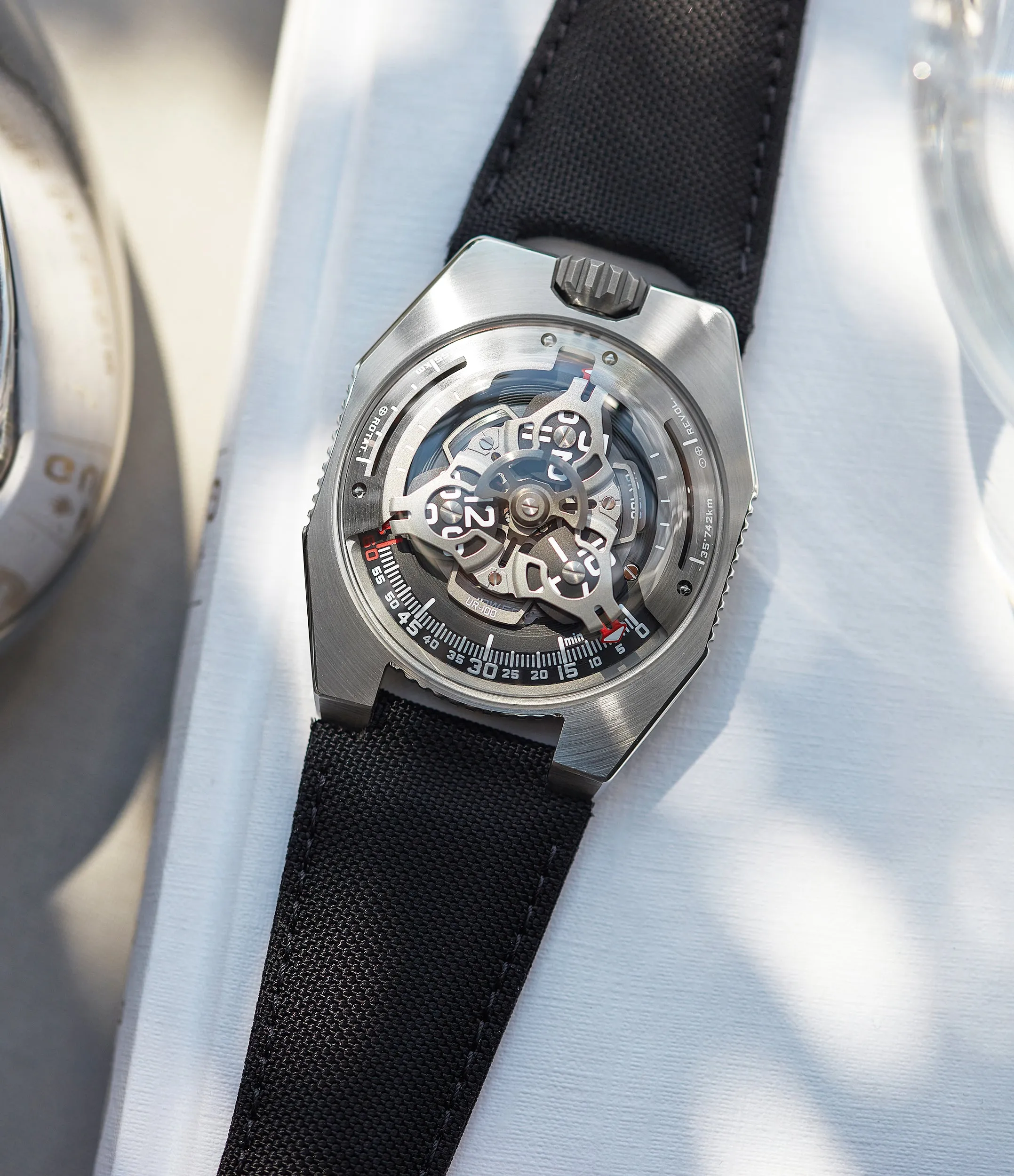
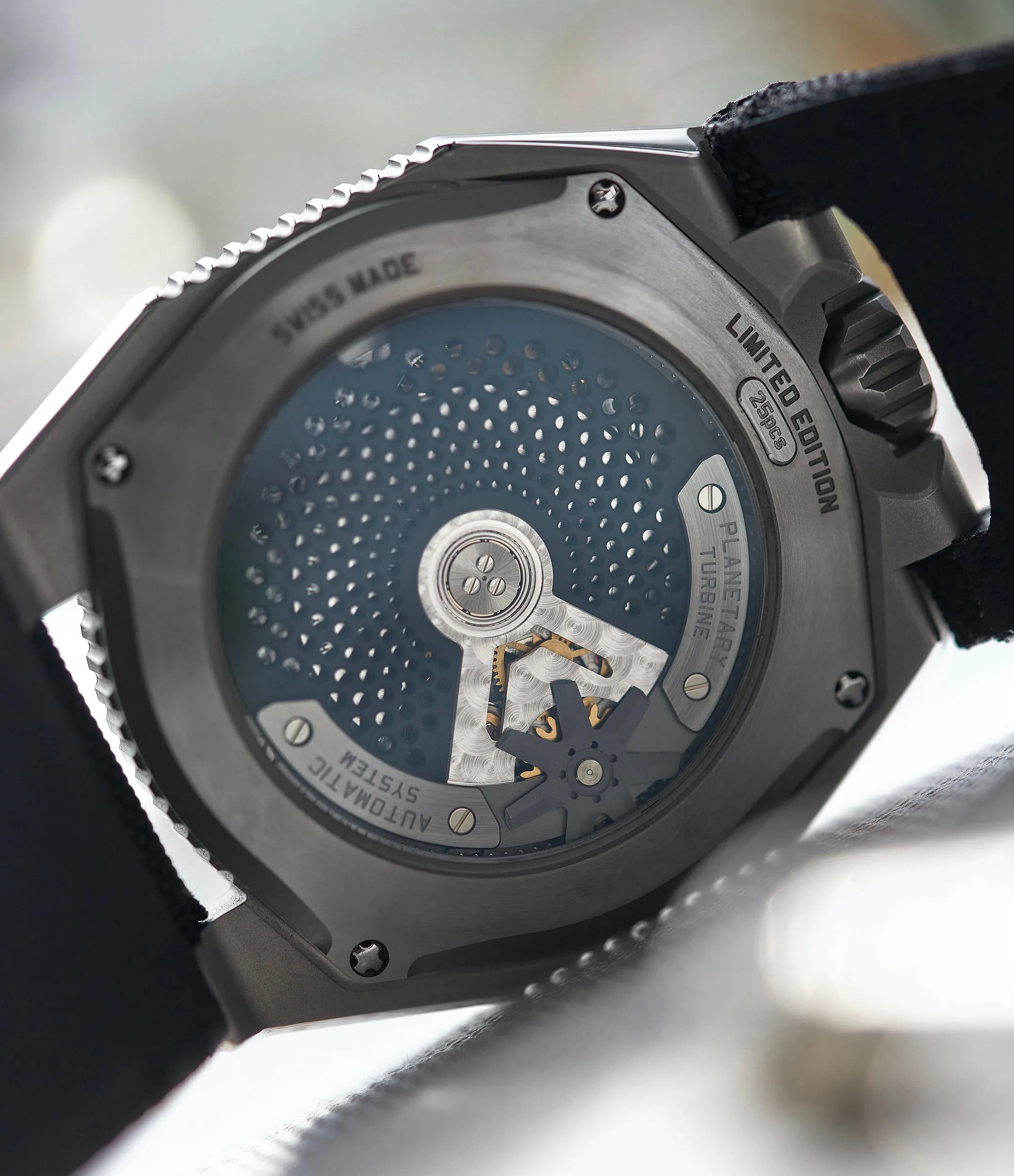
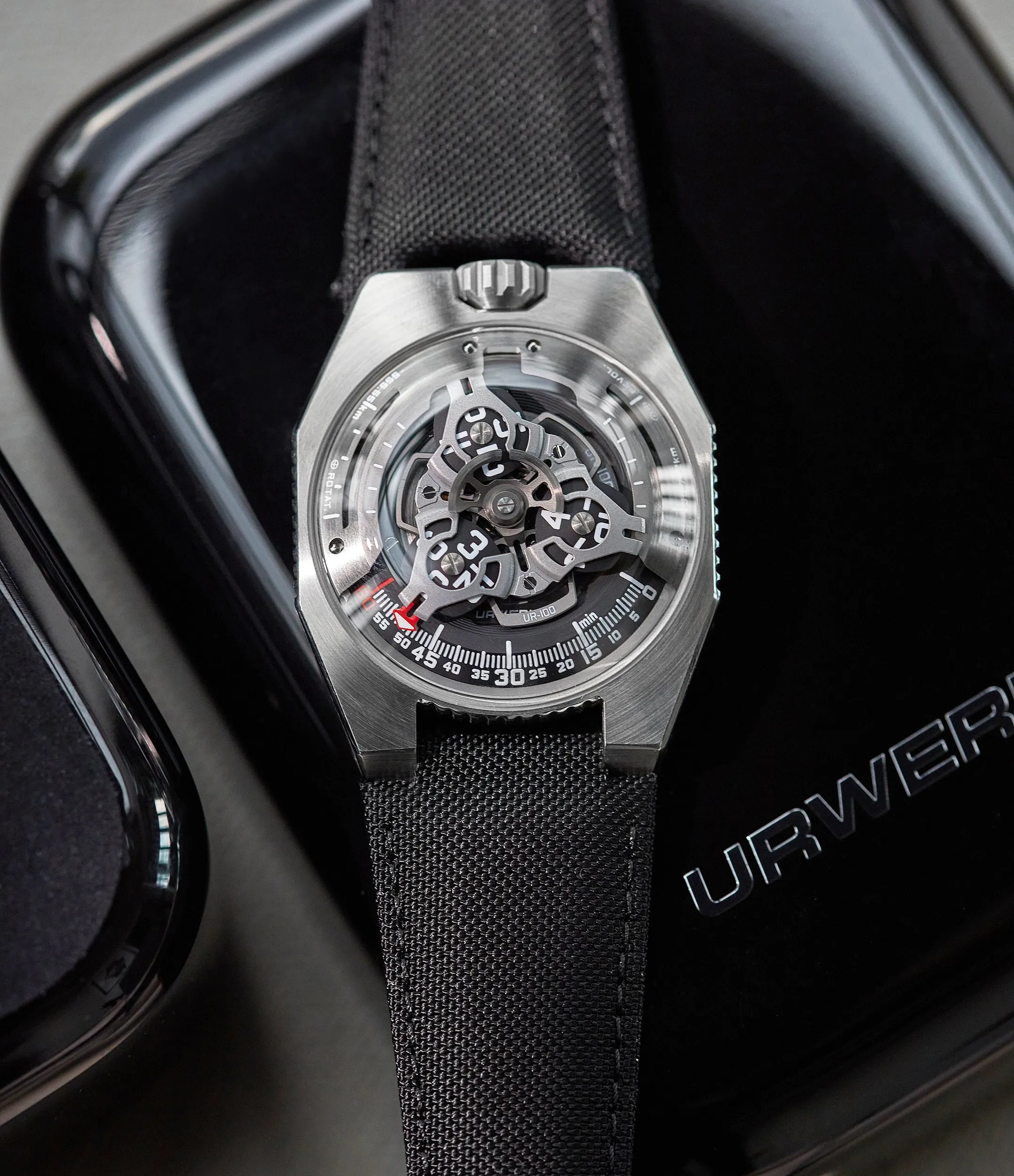
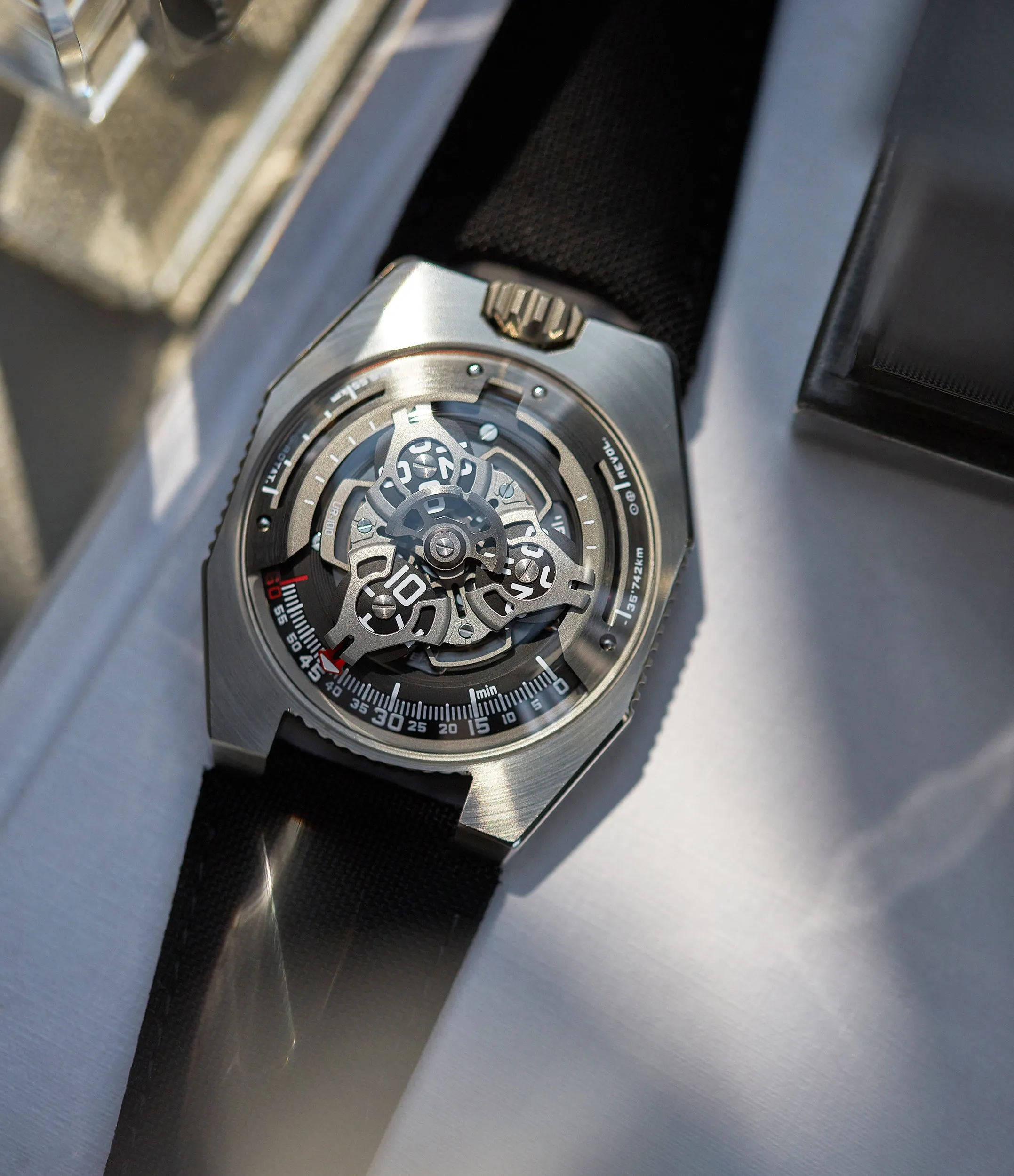
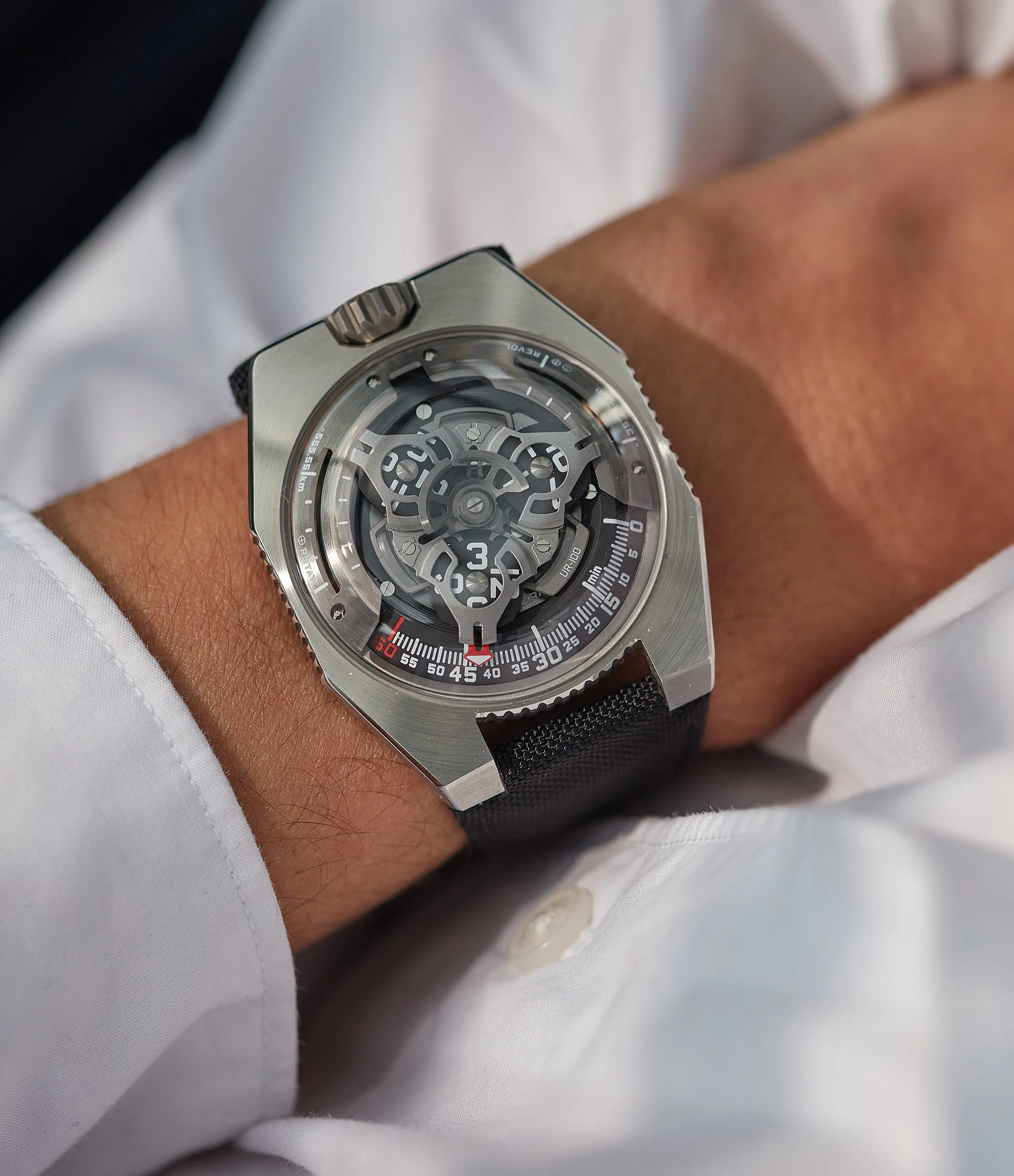
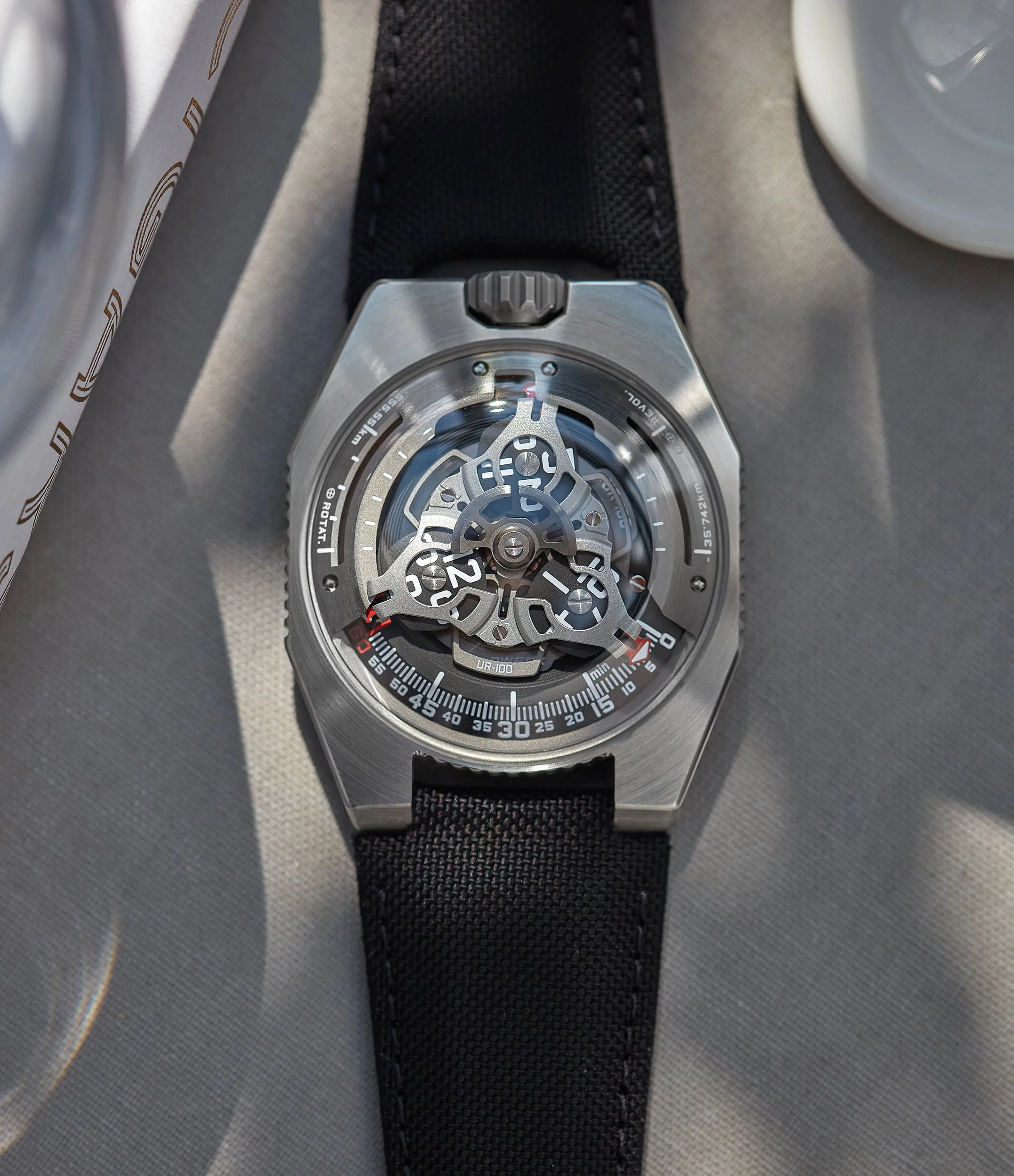
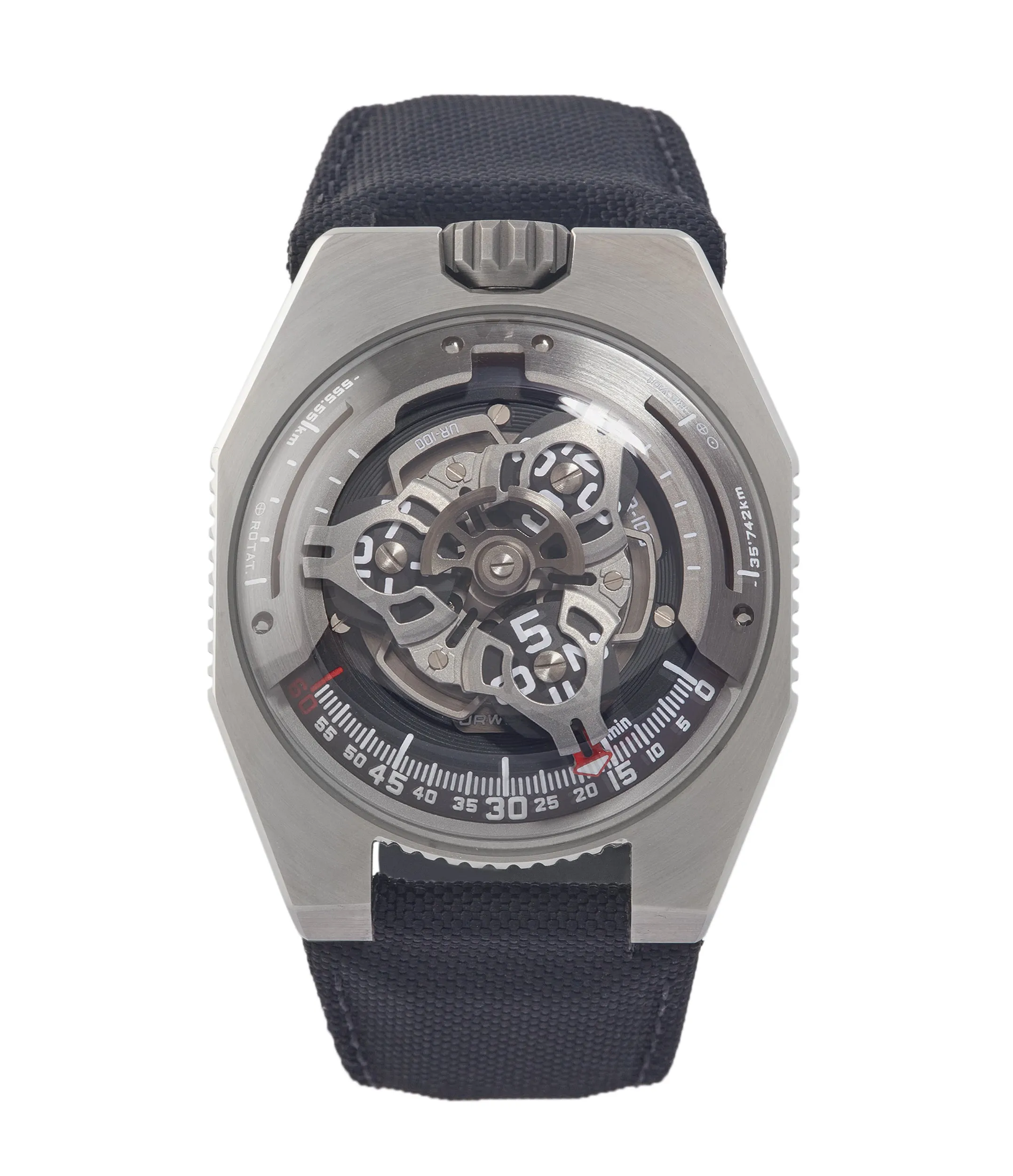
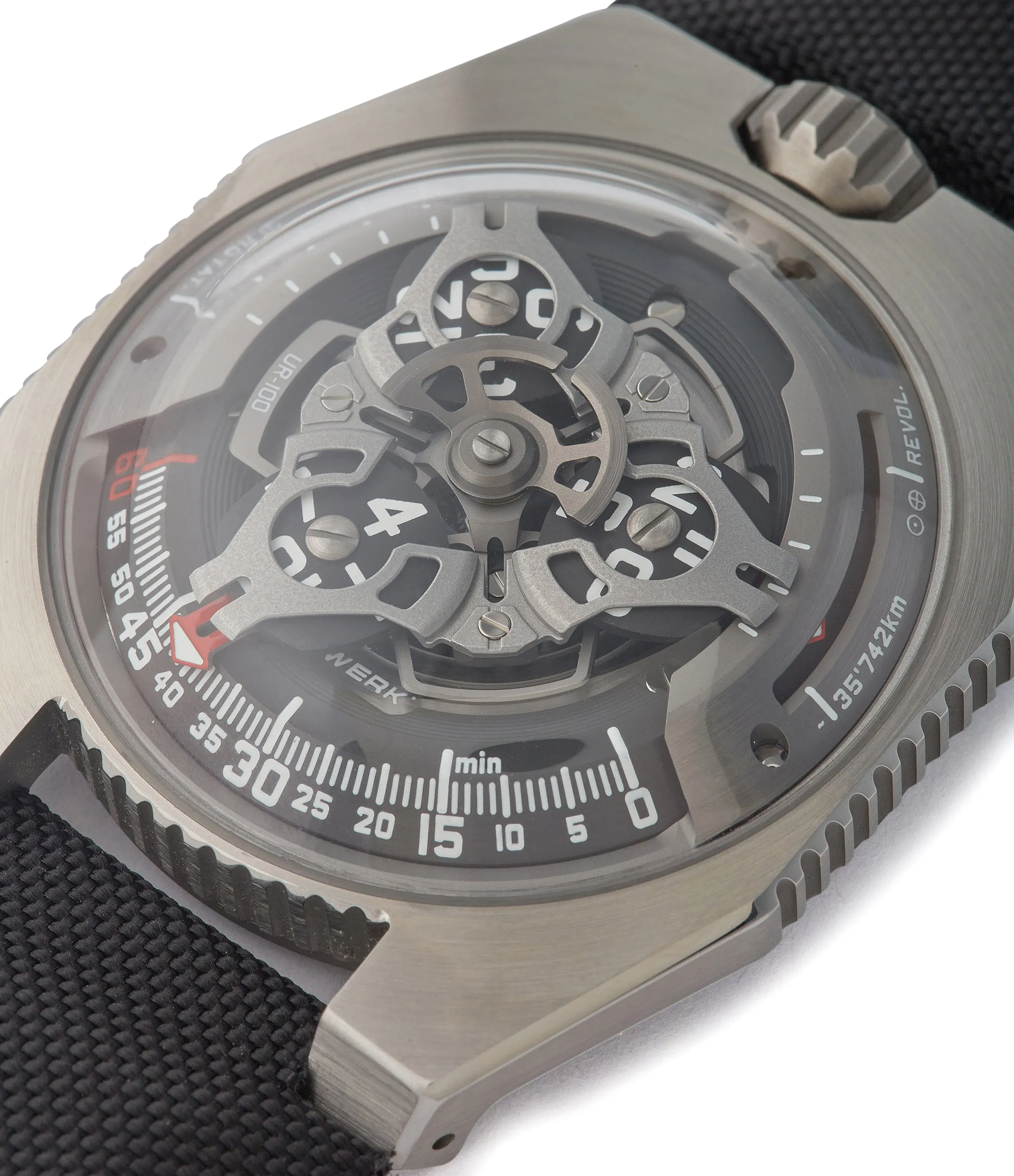
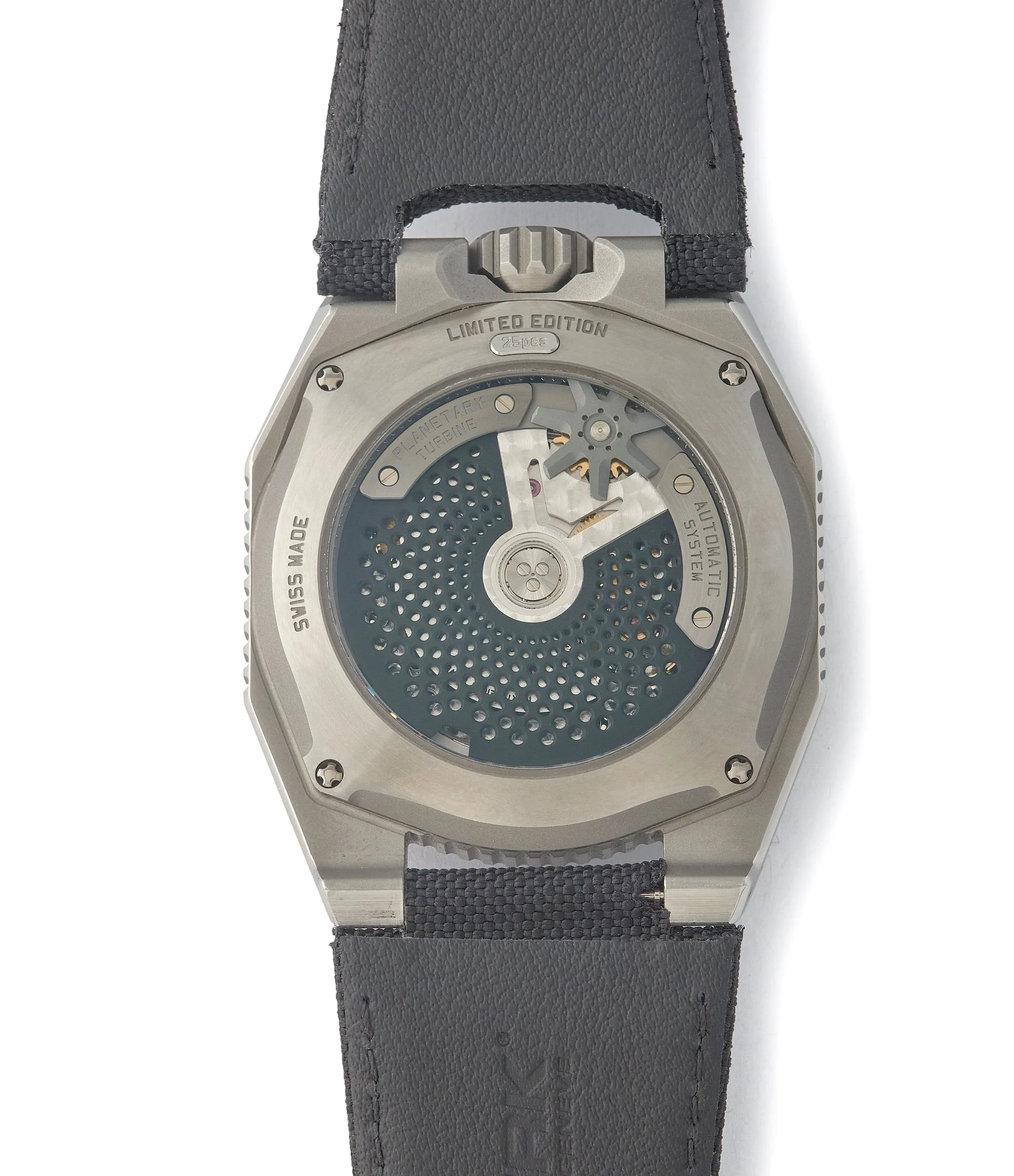
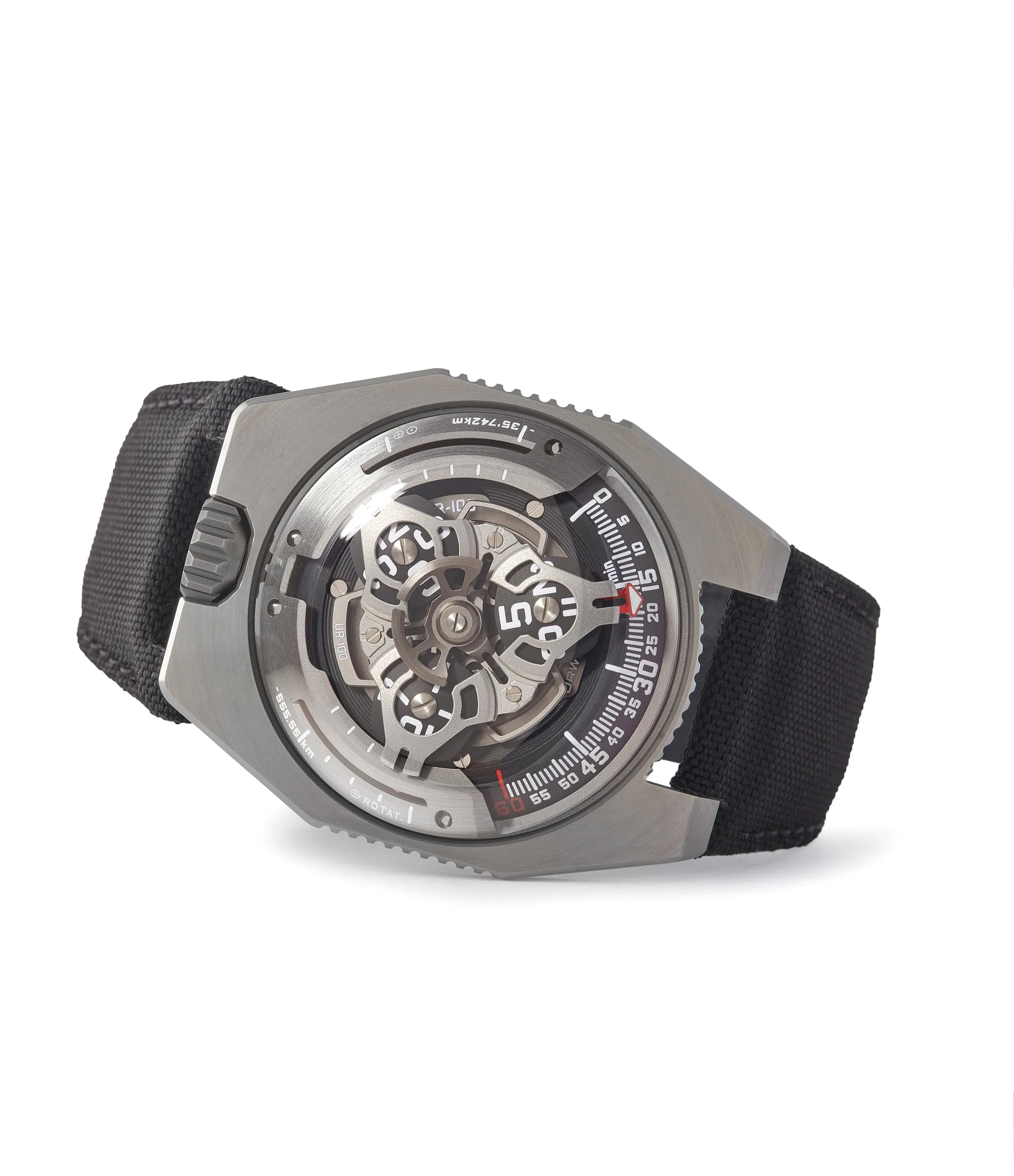
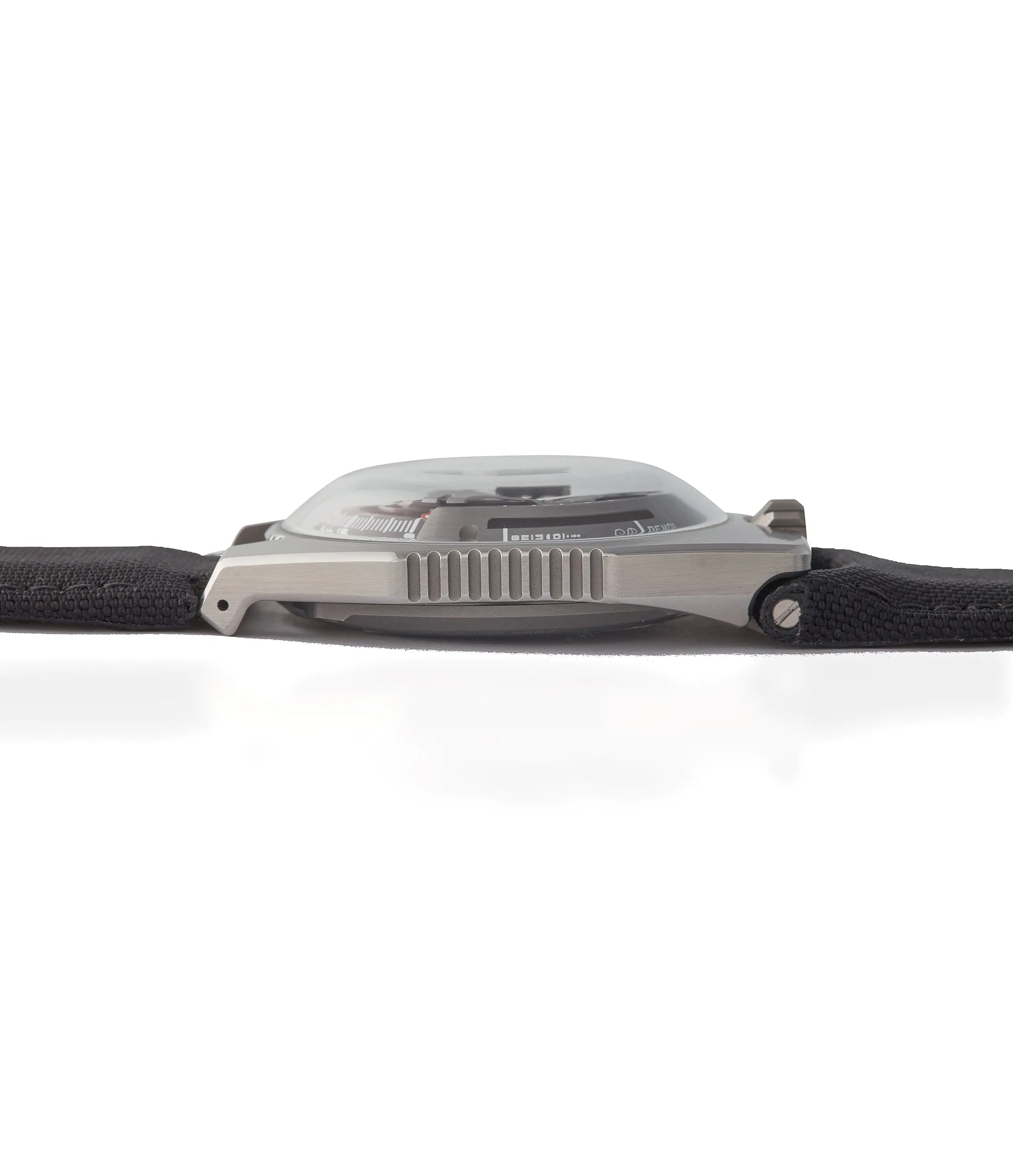
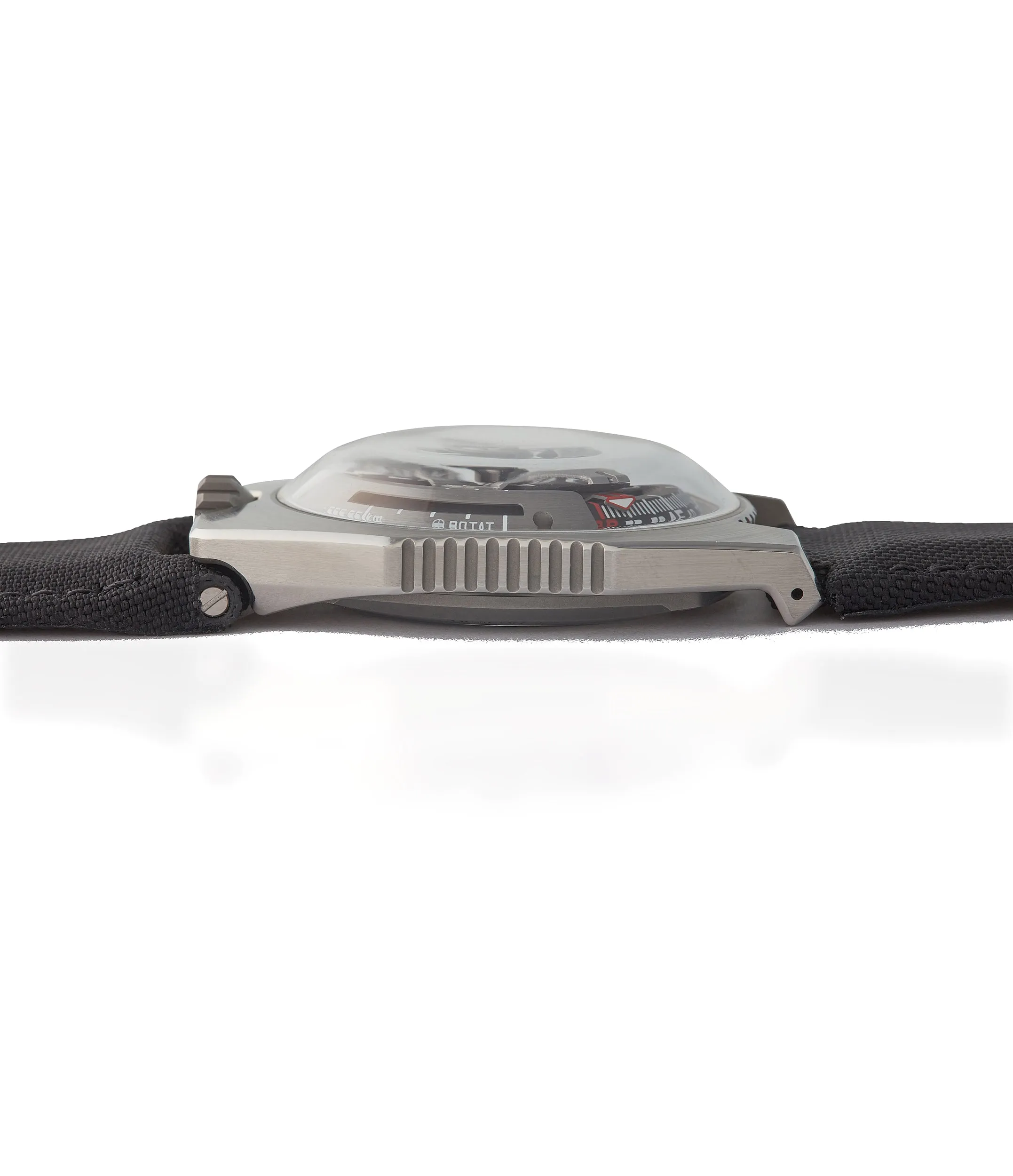
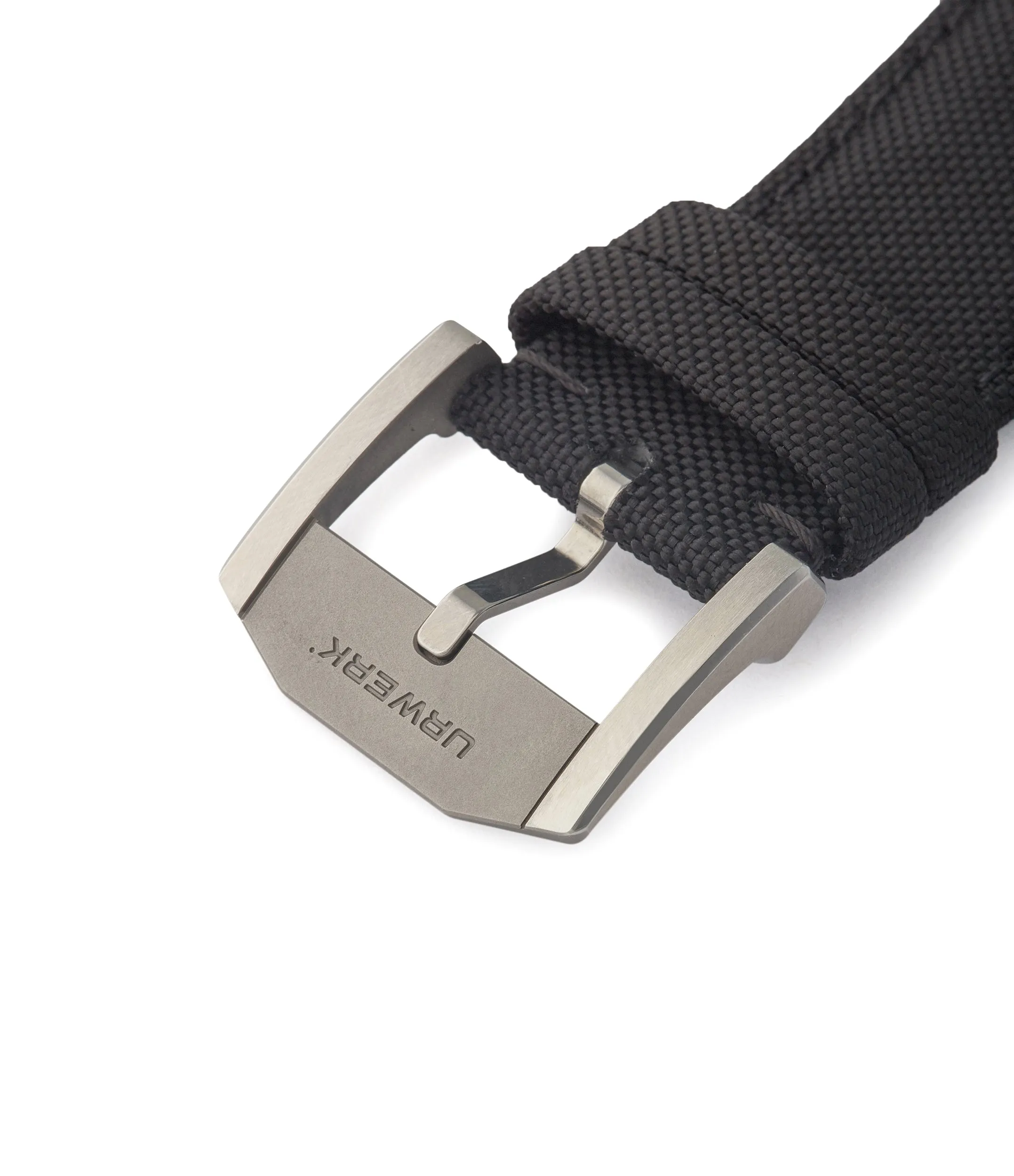
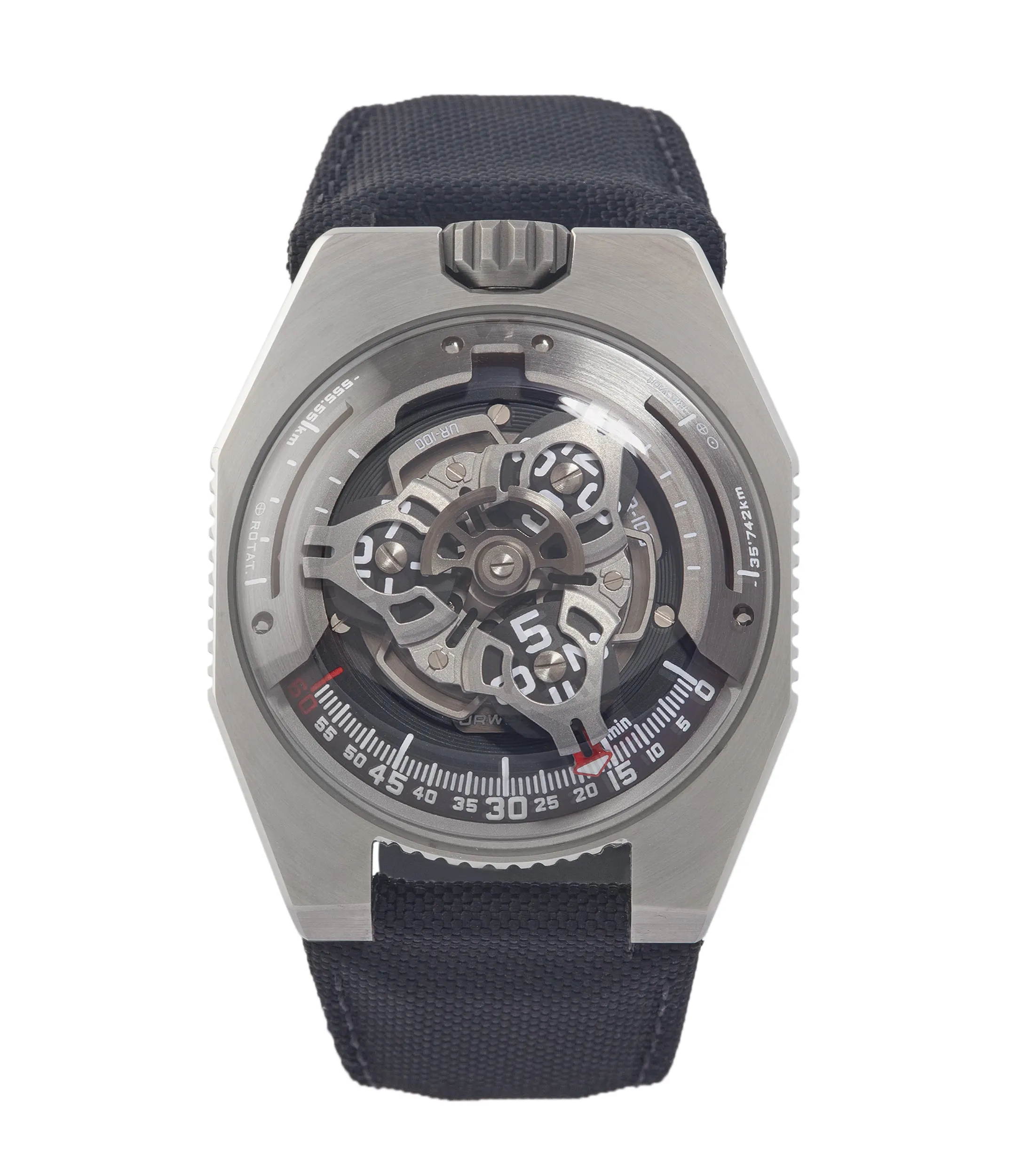





![Bella Poarch 289 [Damaged: 7.5/10] Bella Poarch 289 [Damaged: 7.5/10]](https://www.kimonojacket.shop/image/bella-poarch-289-damaged-7510_hhNnjF_300x.webp)




